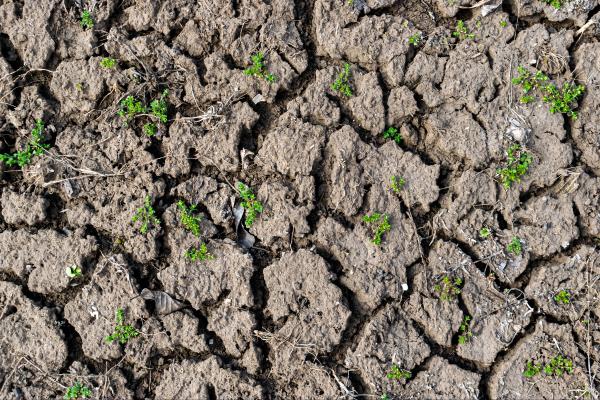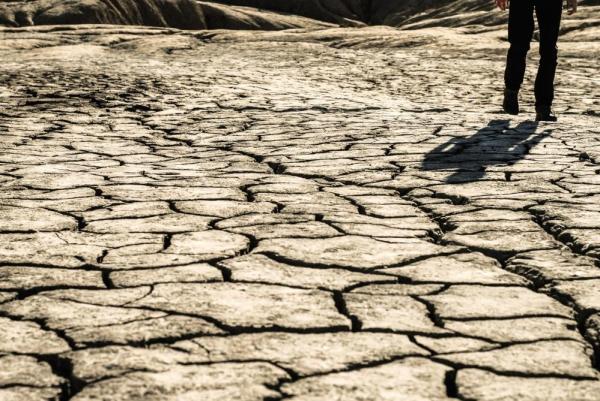
Beneath our feet lies one of Earth's most precious yet often overlooked resources: soil. This thin layer of earth sustains life as we know it, supporting everything from the food we grow to the diverse ecosystems that maintain our planet's health. However, this vital resource faces increasing threats from human activities and natural processes, leading to a concerning phenomenon known as soil degradation.
In this article, we'll explore what soil degradation is, examining its causes, consequences, and practical solutions for protecting this invaluable resource.
What is degradation and its types?
Soil degradation occurs when soil loses its vital properties, diminishing its ability to support ecosystems and provide essential services. To understand this process better, let's first explore what soil actually is.
Soil forms the Earth's outermost layer, structured in distinct layers called horizons. The topmost horizon contains rich organic matter, followed by a layer characterized by leached materials, and finally a transition layer leading to bedrock.
Far from being static, soils are dynamic systems constantly undergoing formation and degradation processes.
Though geologically thin, soil plays a crucial role in sustaining life. It provides the foundation for plant growth, hosts countless species of animals, fungi, and bacteria, and facilitates the transformation of organic matter into inorganic substances. Moreover, soil forms the backbone of our agricultural and livestock farming systems.
Types of soil degradation:
Given soil's vital importance, its degradation poses significant challenges. Here are the main types:
- Erosion: while natural erosion is normal, problematic erosion occurs when the process intensifies beyond usual rates. In severe cases, the vital topsoil layer can be severely reduced or completely lost, devastating the soil's ability to support life.
- Salinization: this issue primarily affects coastal regions. When coastal freshwater aquifers are overexploited, seawater can infiltrate inland, increasing the soil's salt content to harmful levels.
- Pollution: soil pollution occurs when harmful substances enter the ecosystem. These contaminants can come from various sources: direct waste disposal, contaminated water runoff, or even polluted rainfall carrying harmful substances.
- Drought: with climate change intensifying, drought has become a critical concern. Soil requires adequate moisture to sustain life, and prolonged drought can lead to massive losses of soil organisms and vegetation.
The most extreme outcome of soil degradation is desertification, a process where fertile land transforms into lifeless desert. This represents the ultimate stage of soil degradation, where the land loses its ability to support life and agricultural productivity.
Understanding soil degradation starts with knowing what we're protecting. Discover the complex world of soil layers in our related article.

Causes of soil degradation
Understanding the root causes of soil degradation is crucial for developing effective conservation strategies and protecting our vital soil resources. While natural processes can contribute to soil degradation, human activities often accelerate and intensify these problems. Let's explore the main factors that drive soil degradation in our modern world.
The major causes of soil degradation are:
Poor waste management:
Improper or illegal waste disposal can severely damage soil quality. Liquid waste is particularly problematic as it can rapidly spread through large areas.
Some contaminants, like heavy metals such as lead, become nearly impossible to remove once they enter the soil. In arid regions, even seemingly harmless waste like glass fragments can create additional hazards, increasing fire risks in areas with dry vegetation.
Agricultural and forest practices:
Several human activities significantly impact soil health, these include:
- Deforestation removes crucial root systems that prevent erosion.
- Intensive farming without crop rotation depletes specific soil nutrients.
- Overgrazing strips land of protective vegetation cover.
These issues often interconnect, with forest clearing for agriculture creating a cascade of soil degradation effects. Forest fires can further amplify these problems.
Water resource mismanagement:
In regions where plants aren't naturally adapted to dry conditions, water scarcity can trigger a chain reaction of soil degradation. When vegetation dies due to lack of water, the vital top layer of soil becomes impoverished and more susceptible to erosion.
Infrastructure development:
Certain land management practices can have far-reaching effects on soil health. Large dams, for instance, disrupt natural processes by:
- Blocking the flow of nutrient-rich silt and clay to riverside areas.
- Altering the natural water table.
- Changing soil moisture patterns in surrounding areas.
These various causes rarely act in isolation. Instead, they often work together, creating compound effects that accelerate soil degradation. From industrial waste to agricultural chemicals, discover more about how human activities contaminate our precious soils in our related article.
Consequences of soil degradation
When soil degradation occurs, its impacts ripple through entire ecosystems and human communities, creating interconnected problems that can persist for generations. Understanding these consequences helps us grasp the urgent need for soil conservation and rehabilitation efforts.
The most fundamental consequence of soil degradation is its diminished capacity to support life. Once healthy soil deteriorates, the intricate web of life it once sustained, from microorganisms to plants and animals, begins to collapse. This biological degradation creates a devastating cycle because as soil loses its ability to support life, it becomes even more vulnerable to further degradation.
In a cruel irony, agriculture both contributes to and suffers from soil degradation. When soil health declines, crop yields decrease, leading to significant economic losses for farming communities. These losses can amount to millions of dollars in agricultural productivity, affecting food security and rural livelihoods. The impact is particularly severe in regions where alternative farming land is scarce.
Perhaps most concerning is the difficulty of reversing soil degradation once it occurs. While techniques like bioremediation offer some hope, restoring degraded soil to its original productive state is a lengthy, complex, and often expensive process.
This multifaceted impact underscores why soil conservation isn't just an environmental concern, but a crucial issue for human welfare, economic stability, and global food security.
How to prevent soil degradation
Preventing soil degradation requires a coordinated effort at both institutional and individual levels. While the challenge may seem daunting, there are concrete steps we can take to protect this vital resource for future generations.
The foundation of effective soil conservation lies in strong environmental policies and practices. This includes implementing sustainable agriculture techniques, establishing strict regulations on waste disposal, and developing comprehensive fire prevention protocols.
Furthermore, urban development must be planned with soil preservation in mind, while existing forested areas need robust protection. Regular monitoring and enforcement of these regulations ensure their effectiveness.
As citizens, we play a crucial role in soil conservation through our daily choices. This starts with supporting sustainable and local farming practices through our purchasing decisions. Proper waste management at home, including careful sorting and disposal, helps prevent soil contamination.
Want to be part of the solution? Learn how minimizing your waste footprint can help protect our soils in our companion article.

If you want to read similar articles to What Is Soil Degradation?, we recommend you visit our Environment (other) category.